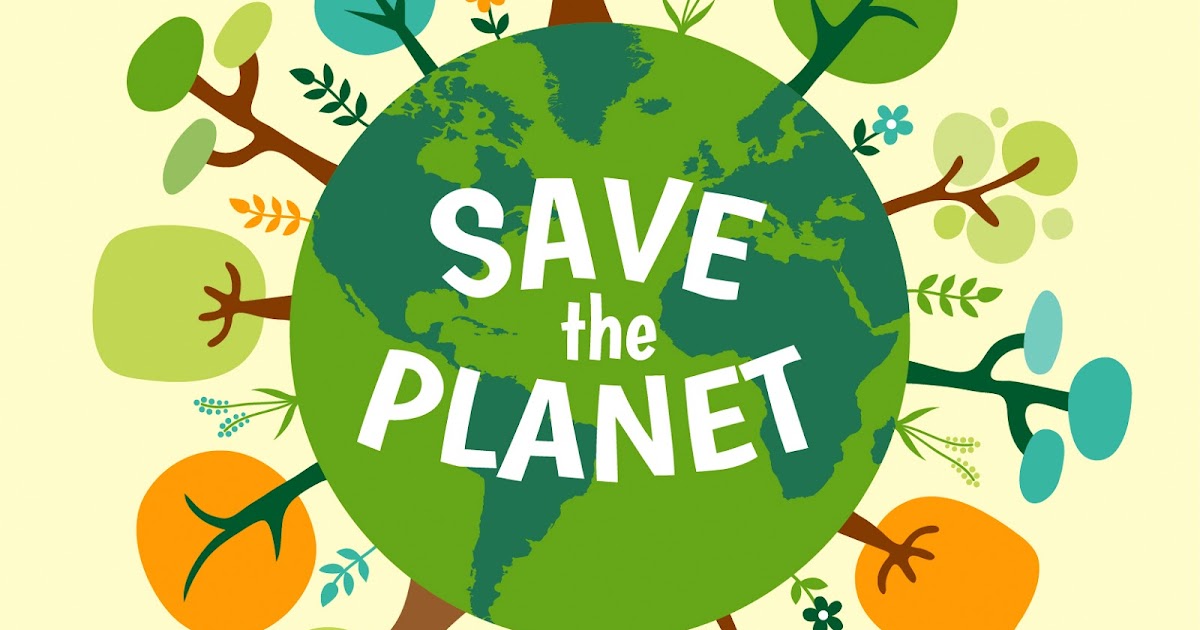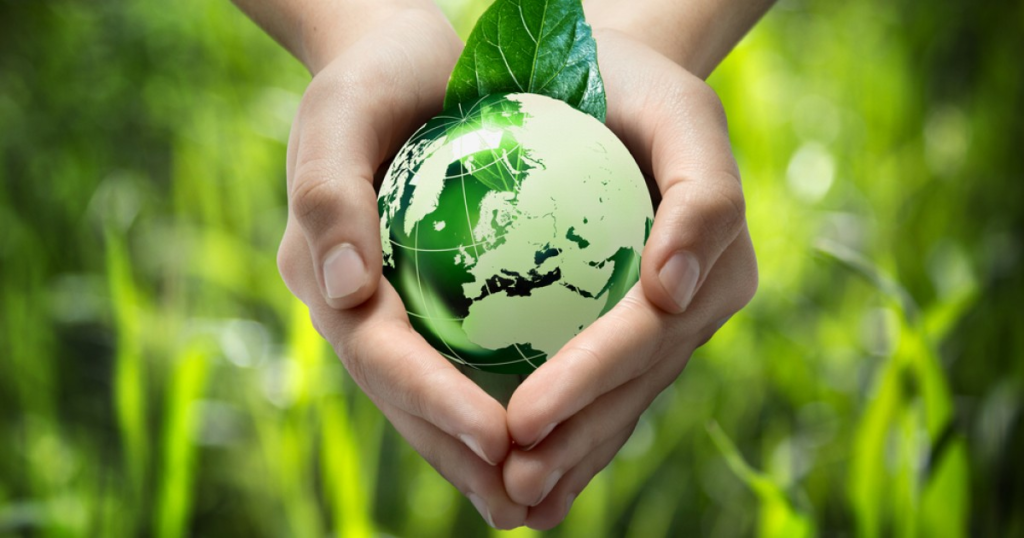Beating 10 Environmental Issues: Hope for a Healthy Planet
In a world facing unprecedented environmental challenges, the urgency of addressing these issues cannot be overstated. Our planet is at a critical juncture, and the decisions we make today will shape the future for generations to come. In this comprehensive article, we will delve deep into the multifaceted realm of environmental issues, exploring their root causes, consequences, and most importantly, the power of hope and action in creating a sustainable future.
Setting the Stage: The Urgency of Environmental Issues
The first step towards addressing any problem is recognizing its severity. Our planet is grappling with a multitude of interconnected environmental issues that demand immediate attention. From climate change’s far-reaching impacts to the alarming rate of biodiversity loss, the signs of distress are undeniable.
The Power of Hope: Our Role in Creating a Sustainable Future
Amidst the challenges, hope emerges as a potent force for change. It is we, the inhabitants of this planet, who hold the key to a brighter and sustainable future. Understanding our role in this global endeavor is essential to effecting real change.
Understanding Environmental Issues

Climate Change: The Global Crisis
Climate change, the defining environmental issue of our era, is driven primarily by the excessive accumulation of greenhouse gases in the atmosphere. Its consequences are both immediate and long-term, affecting everything from weather patterns to sea levels.
Causes and Consequences
Understanding the causes of climate change, from burning fossil fuels to deforestation, is crucial to crafting effective solutions. Equally vital is grasping the consequences, which range from extreme weather events to food and water scarcity.
The Role of Greenhouse Gases
Greenhouse gases, such as carbon dioxide and methane, trap heat in the Earth’s atmosphere, leading to a gradual increase in global temperatures. Their control and reduction are pivotal to mitigating climate change.
Biodiversity Loss: Protecting Earth’s Richness
The Earth teems with diverse life forms, but this biodiversity is under threat as never before. Uncovering the causes of biodiversity loss, from habitat destruction to invasive species, is paramount in preserving the planet’s ecological richness.
Deforestation: A Threat to Diversity
Forests, often called the lungs of the Earth, are dwindling at an alarming rate due to deforestation. The consequences extend beyond loss of habitat to disruptions in climate patterns and water cycles.
Habitat Destruction: Impact on Ecosystems
Habitats, whether on land or in water, are the delicate homes of countless species. Their destruction disrupts ecosystems and threatens the survival of numerous organisms.
Pollution Problems: Cleaning Up Our Act
Pollution, in its various forms, poses a grave threat to the environment and human health alike. Recognizing the different types of pollution and their impacts is crucial to finding effective solutions.
Air Pollution: Effects on Health and Environment
From smog-choked cities to respiratory illnesses, the consequences of air pollution are widespread. Addressing this issue involves both technological innovation and lifestyle changes.
Ocean Pollution: Threats to Marine Life
The world’s oceans are vital for life on Earth, yet they are increasingly polluted with plastics, chemicals, and other harmful substances. This pollution imperils marine ecosystems and the creatures that call them home.
Hope in Sustainable Living

The Transition to Renewable Energy
Transitioning from fossil fuels to renewable energy sources like solar and wind power is a crucial step toward sustainability. It not only reduces greenhouse gas emissions but also creates a cleaner, more resilient energy system.
Solar Energy: Harnessing the Sun’s Power
Solar energy, harnessed through photovoltaic cells, offers a clean and virtually limitless source of power. Its adoption is growing worldwide, promising a greener future.
Wind Energy: A Clean Source of Electricity
Harnessing the power of the wind through wind turbines is another key element in our transition to sustainability. Wind energy is not only clean but also abundant.
Green Transportation Solutions
Transportation is a significant contributor to environmental issues. Green transportation options, such as electric vehicles and public transit, are essential for reducing carbon emissions.
Electric Vehicles: Driving Towards Sustainability
Electric vehicles (EVs) are becoming increasingly accessible and are a vital part of the sustainable transportation revolution. Their benefits extend beyond zero emissions to reduced operating costs.
Public Transportation: Reducing Carbon Footprints
Public transportation systems play a vital role in reducing individual carbon footprints. Efficient, affordable, and widespread public transit options are crucial for sustainable cities.
Sustainable Agriculture Practices
The way we produce food has profound environmental implications. Adopting sustainable agricultural practices can help mitigate the negative impacts of farming on the planet.
Organic Farming: Healthier Food, Healthier Planet
Organic farming eschews synthetic pesticides and promotes soil health, resulting in not only healthier food but also a more sustainable agricultural system.
Regenerative Farming: Restoring Soil Health
Regenerative farming goes beyond sustainability by actively restoring soil health, sequestering carbon, and enhancing biodiversity. It represents a holistic approach to agriculture.
Individual Actions for Environmental Change
As individuals, our daily choices and behaviors collectively contribute to environmental issues. Taking steps to reduce our ecological footprint is a powerful way to effect change.
Reduce, Reuse, Recycle: Everyday Sustainability
The mantra of “reduce, reuse, recycle” provides a roadmap for sustainable living. Minimizing waste, repurposing items, and recycling materials all play a crucial role in reducing environmental impact.
Waste Reduction Strategies
Implementing waste reduction strategies, such as composting and mindful consumption, can significantly reduce the amount of waste sent to landfills.
The Benefits of Upcycling
Upcycling, the creative reuse of materials, not only reduces waste but also adds value to discarded items, making it an environmentally friendly and economically savvy practice.
Conserving Water: A Precious Resource
Water conservation is critical in a world where freshwater resources are increasingly stressed. Simple actions, from fixing leaks to using water-saving appliances, can make a significant difference.
Water-Saving Tips for Homes
Implementing water-saving tips in our homes, such as installing low-flow faucets and efficient irrigation systems, can significantly reduce water consumption.
Impact of Water Conservation on the Planet
Water conservation not only ensures a sustainable supply of freshwater but also protects aquatic ecosystems and aquatic biodiversity.
Going Vegan or Plant-Based: A Greener Diet
Our dietary choices have environmental consequences. Shifting towards a plant-based or vegan diet can substantially reduce the environmental footprint of our food.
Environmental Benefits of Plant-Based Eating
Plant-based diets not only reduce greenhouse gas emissions associated with livestock production but also promote biodiversity and reduce deforestation.
Tips for a Smooth Transition
Transitioning to a plant-based diet can be a rewarding journey. Tips and strategies can help individuals make the shift successfully.
Community and Collective Efforts
Solving environmental issues requires collective action, from local communities to global organizations. Together, we can create a more sustainable future.
Advocacy and Policy Changes
Advocating for stronger environmental policies is a powerful way to effect change at the governmental level. Grassroots movements and lobbying efforts play crucial roles in shaping policy.
Grassroots Movements: Local Environmental Activism
Local environmental activism, driven by passionate individuals and communities, can lead to impactful change on the ground.
Lobbying for Stronger Environmental Policies
Lobbying, when done transparently and ethically, can influence policymakers to enact stronger environmental protections and regulations.
Corporate Responsibility
Businesses also play a vital role in environmental stewardship. Adopting sustainable business practices is not only ethically sound but can also lead to profitability.
Sustainable Business Practices: A Win-Win
Sustainable businesses benefit not only the environment but also their bottom line. From reducing waste to adopting renewable energy, the options are vast.
Holding Corporations Accountable
Holding corporations accountable for their environmental impact is essential. Consumers and investors can use their influence to encourage responsible practices.
International Cooperation

Environmental issues are inherently global, transcending borders. International agreements and cooperation are key to addressing these challenges effectively.
The Paris Agreement: A Global Commitment
The Paris Agreement stands as a landmark international accord, uniting countries in their commitment to combat climate change and limit global warming.
United Nations’ Sustainable Development Goals
The United Nations’ Sustainable Development Goals provide a comprehensive framework for addressing environmental issues and fostering global sustainability.
Technology and Innovation for a Sustainable Future
Innovation and technology have the potential to revolutionize our approach to environmental challenges. Cutting-edge solutions are emerging to tackle these issues head-on.
Cutting-Edge Environmental Technologies
From carbon capture and storage (CCS) to advanced recycling technologies, cutting-edge innovations offer hope for a sustainable future.
Carbon Capture and Storage (CCS)
CCS technologies can capture carbon dioxide emissions from various sources, mitigating their impact on the atmosphere and climate.
Advanced Recycling Technologies
Innovations in recycling technologies are making it more efficient and cost-effective to reuse materials, reducing the strain on natural resources.
Green Innovations in Construction
The construction industry is embracing green innovations, from sustainable building materials to energy-efficient designs, to reduce its environmental footprint.
Sustainable Building Materials
Choosing sustainable building materials, such as bamboo and recycled steel, can significantly reduce the environmental impact of construction.
Net-Zero Energy Buildings
Net-zero energy buildings produce as much energy as they consume, revolutionizing the way we approach construction and energy consumption.
Education and Awareness
Education and awareness are the cornerstones of environmental action. Empowering individuals with knowledge is key to fostering a sustainable mindset.
Environmental Education: Shaping Future Generations
Teaching environmental literacy in schools and communities equips future generations with the knowledge and values needed to protect the planet.
The Importance of Teaching Environmental Literacy
Environmental literacy goes beyond facts and figures; it instills a deep understanding of our interconnectedness with the natural world.
Hands-On Learning: School and Community Programs
Hands-on environmental programs, whether in schools or communities, provide practical experiences that nurture a love for nature and sustainability.
Media’s Role in Environmental Awareness
The media plays a pivotal role in shaping public perception and awareness of environmental issues. Documentaries, films, and social media all contribute to this cause.
Documentaries and Films: Shining a Light on Issues
Documentaries and films have the power to inform, inspire, and mobilize people to take action on environmental issues.
Social Media Activism: Amplifying Voices
Social media platforms offer a global stage for environmental activists and organizations to raise awareness and mobilize support for their causes.
Resilience and Adaptation

Adapting to the impacts of climate change is essential for our long-term survival. Building resilience at individual and community levels is a proactive response.
Preparing for Climate Change Impacts
Anticipating and preparing for climate change impacts, such as extreme weather events and sea-level rise, is crucial for safeguarding communities.
Building Climate-Resilient Communities
Community-based efforts, including climate-resilient infrastructure and disaster preparedness plans, are essential for adapting to a changing climate.
Natural Disaster Preparedness
Being prepared for natural disasters, from hurricanes to wildfires, can save lives and reduce the environmental impact of these events.
Ecosystem Restoration
Restoring damaged ecosystems through reforestation and wetland restoration is a vital part of mitigating environmental degradation.
Reforestation Initiatives
Reforestation efforts aim to counteract deforestation, sequester carbon, and provide habitat for diverse species.
Wetland Restoration: Protecting Against Flooding
Wetlands act as natural buffers against flooding and provide critical habitats for numerous species. Their restoration is a priority for climate resilience.
Celebrating Success Stories
Amid the challenges, there are numerous success stories and achievements in the realm of environmental conservation and sustainability.
Notable Environmental Achievements
Recognizing and celebrating notable environmental achievements, from successful species reintroductions to protected natural areas, can inspire further action.
Success Stories in Conservation
Conservation efforts have saved countless species from extinction and restored ecosystems to health. These success stories offer hope and motivation.
Cities Leading the Way in Sustainability
Cities worldwide are taking bold steps toward sustainability, implementing green initiatives, and setting ambitious targets to combat climate change.
Everyday Heroes: Individuals Making a Difference

Individuals from all walks of life are making significant contributions to environmental causes. Their stories serve as inspiration for collective action.
Inspirational Environmental Activists
Environmental activists, past and present, have dedicated their lives to protecting the planet. Their unwavering commitment and passion inspire us all.
Local Environmental Champions
At the grassroots level, local environmental champions are effecting change in their communities, showing that small actions can lead to significant results.
Conclusion
In conclusion, our planet faces a crossroads, and the decisions we make today will determine the course of our future. While environmental issues may seem overwhelming, hope is a powerful force for change. Embracing our collective responsibility, we can create a brighter future and take action for a healthy planet. Together, we can pave the way for a sustainable world where nature thrives, and future generations inherit a healthy and vibrant Earth.
FAQ with 10 commonly asked questions about environmental issues and sustainability:
What is climate change, and why is it a concern?
Climate change refers to long-term alterations in temperature, weather patterns, and the composition of the Earth’s atmosphere, primarily driven by human activities like burning fossil fuels and deforestation. It’s a concern because it leads to severe consequences, including rising temperatures, extreme weather events, and disruptions to ecosystems.
How do greenhouse gases contribute to climate change?
Greenhouse gases, such as carbon dioxide and methane, trap heat in the Earth’s atmosphere, creating a “greenhouse effect.” This effect intensifies as the concentration of these gases increases, leading to global warming and climate change.
What is biodiversity, and why is it important?
Biodiversity refers to the variety of life forms on Earth, including species diversity, genetic diversity, and ecosystem diversity. It’s crucial because diverse ecosystems provide essential services like pollination, clean water, and climate regulation, benefiting both nature and human well-being.
How does deforestation affect the environment?
Deforestation, the clearing of forests for various purposes, leads to habitat loss, disruption of ecosystems, and contributes to climate change by releasing stored carbon. It also reduces biodiversity and affects local communities that depend on forests.
What are the main sources of air pollution, and how does it impact health and the environment?
Air pollution comes from various sources, including industrial emissions, transportation, and agriculture. It can lead to respiratory diseases, cardiovascular problems, and damage to ecosystems by harming plant and animal life.
What is renewable energy, and how does it help combat climate change?
Renewable energy is derived from sources that are naturally replenished, such as solar, wind, and hydropower. It helps combat climate change by reducing greenhouse gas emissions and offering sustainable alternatives to fossil fuels.
What are some easy ways individuals can reduce their environmental impact?
Individuals can reduce their environmental impact by conserving energy, reducing waste, using public transportation or carpooling, eating a plant-based diet, and supporting eco-friendly products and businesses.
What is the Paris Agreement, and what are its goals?
The Paris Agreement is an international treaty aimed at limiting global warming to well below 2 degrees Celsius above pre-industrial levels, with an ambition to limit it to 1.5 degrees Celsius. Its goals include reducing greenhouse gas emissions, increasing climate resilience, and supporting developing countries in their climate efforts.
How can businesses adopt sustainable practices?
Businesses can adopt sustainable practices by reducing energy and resource consumption, incorporating eco-friendly materials, implementing recycling programs, and engaging in corporate social responsibility initiatives to minimize their environmental impact.
How can I get involved in environmental activism and make a difference?
You can get involved in environmental activism by joining local or national environmental organizations, participating in community clean-up events, supporting sustainable policies and legislation, reducing your personal carbon footprint, and spreading awareness about environmental issues through social media and conversations with friends and family. Every small action counts towards making a positive impact on the planet.
In our previous article on “Planet SOS: 10 Urgent Environmental Issues To Fix,” we explored the pivotal role that hope plays in environmental activism. Building on that theme, Here, we discussed practical steps individuals can take to reduce their ecological footprint, where we delve into the significance of transitioning to renewable energy sources to combat climate change effectively.
For a more in-depth understanding of climate change and its global implications, you may find this insightful article from Medium. These external resources provide valuable insights and actionable steps to contribute to a more sustainable and environmentally conscious future.






Uma resposta